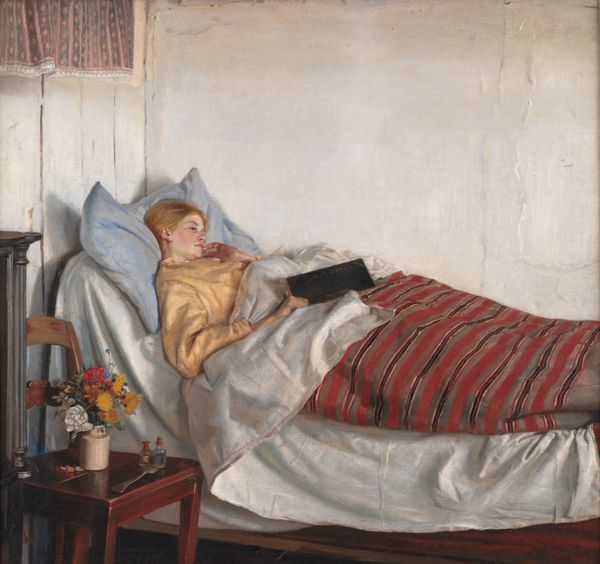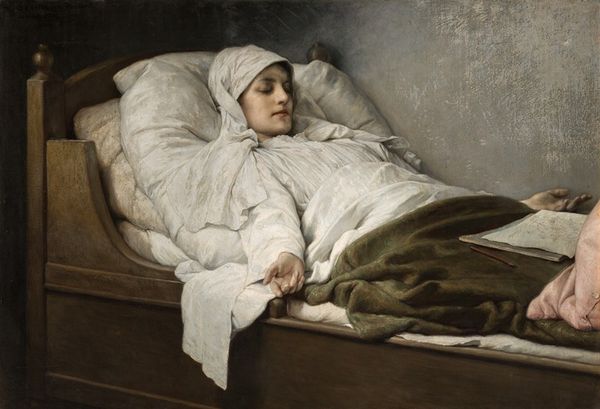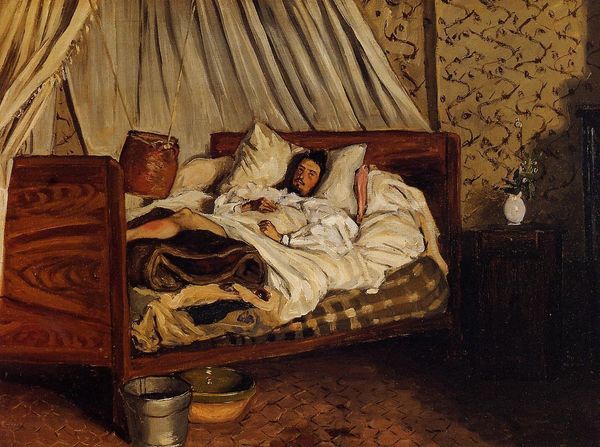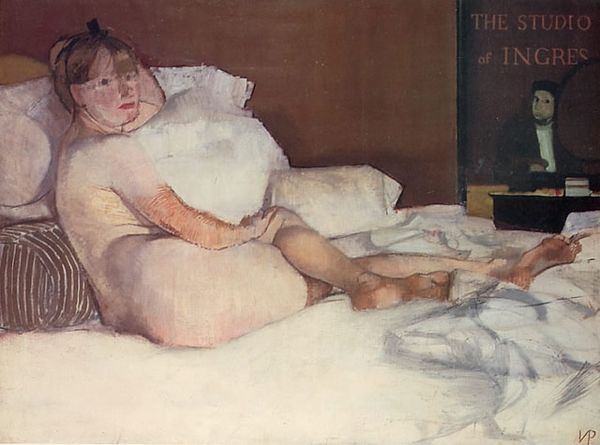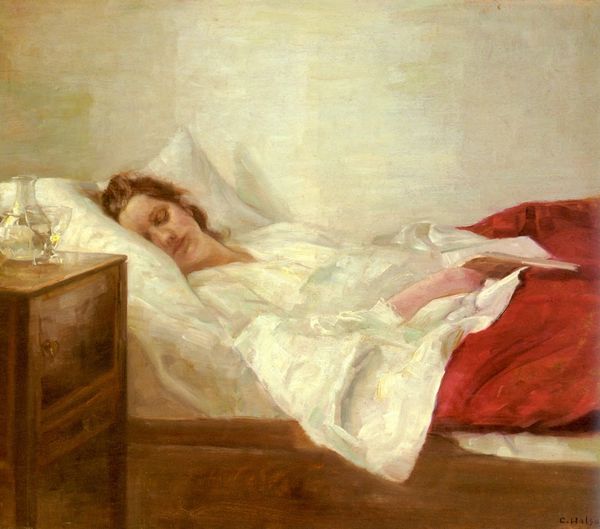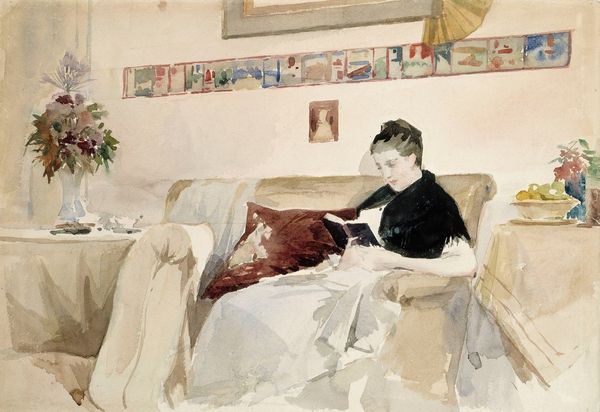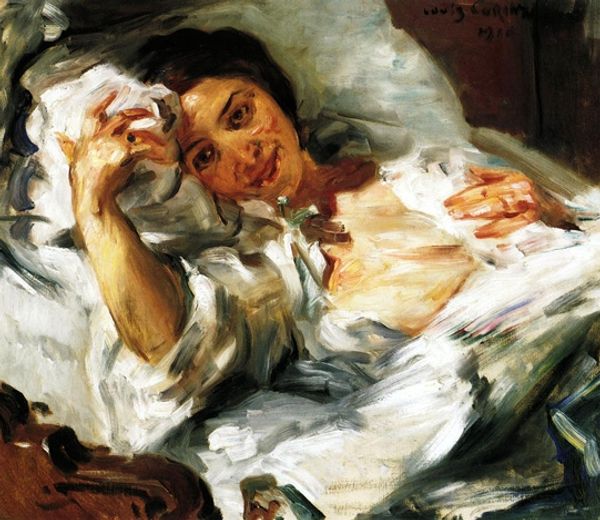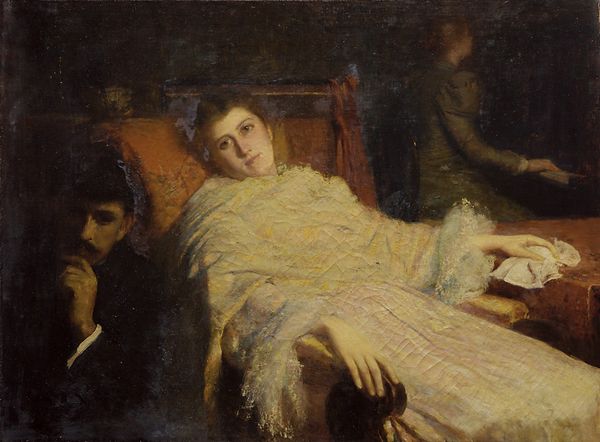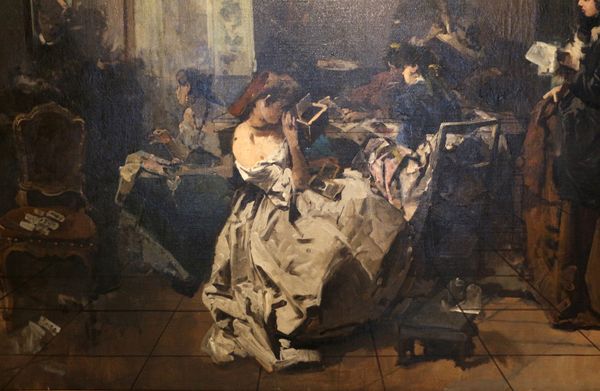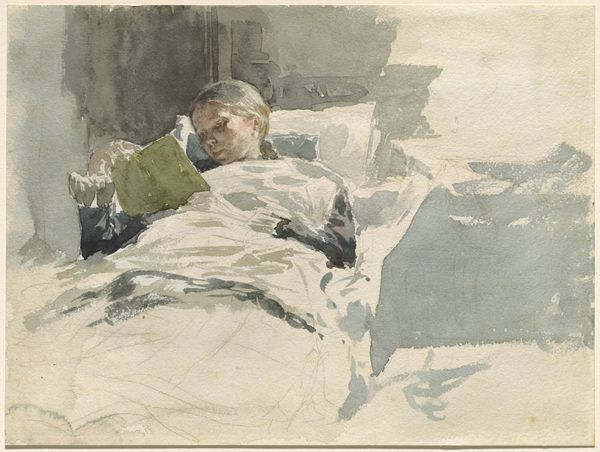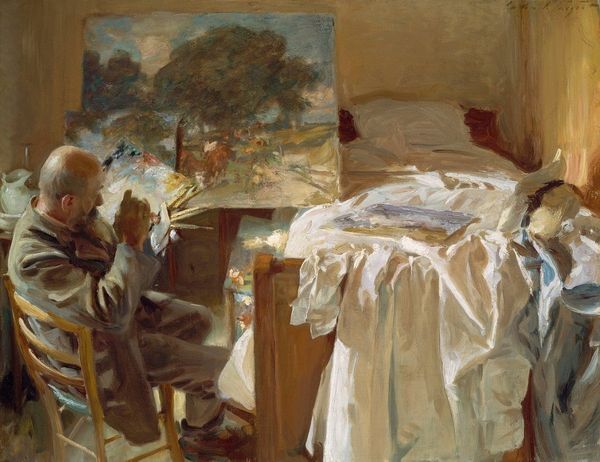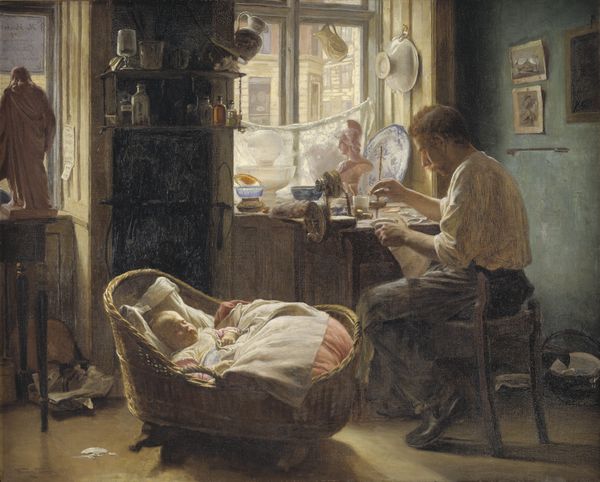
painting, oil-paint
#
portrait
#
painting
#
impressionism
#
oil-paint
#
oil painting
#
intimism
#
genre-painting
#
portrait art
Dimensions: 61 x 46 cm
Copyright: Public domain
Curator: Looking at Degas's painting, "The Pedicure," created around 1873, my first reaction is one of almost voyeuristic intimacy. What about you? Editor: The scene whispers secrets, doesn't it? It is charged with symbolic gestures. Notice how Degas places us, the viewer, almost at the foot of the man meticulously tending to the woman’s foot. There's something profound about the act of tending to someone’s feet, so intimate, so vulnerable. Curator: Vulnerable indeed. She is recumbent on what seems to be a plush sofa, completely covered except for that exposed foot—totally dependent, but also very withdrawn. One might wonder about her level of care. Perhaps it’s also just a moment of pure, ordinary being. It feels less idealized, closer to the mundane. What do you see reflected in these forms and textures? Editor: In many cultures, the foot holds strong symbolism. Its connection to the earth grounds us; but bared it speaks to human frailty and dependence, almost a secular variation on images of the washing of the feet. In intimate relations, who is on their feet, who’s recumbent... It suggests roles, relationships, health... Curator: Good eye! Absolutely, I agree. And the objects scattered about – the dresser adorned with trinkets and containers – add to that feeling, each element contributing a piece to a bigger story we’re left to imagine. Degas presents a narrative of everyday life, a world where beauty and oddity coexist. Editor: Precisely, each element invites our curiosity. From an iconographic viewpoint, even the colours carry weight; earthy tones ground the scene while hints of green could hint at growth or healing. Each carefully rendered detail acts as a symbol of a reality lived within the canvas's frame. Curator: I never fail to learn new nuances when looking through the lens of symbology! "The Pedicure" speaks to a side of humanity that's subtle, understated, where the power dynamics, physical and relational health, are subtly explored and portrayed, perhaps. Editor: And it all starts with our feet on the ground, supported—or not—through these subtle signs of our life, caught by Degas’ perceptive observation.
Comments
No comments
Be the first to comment and join the conversation on the ultimate creative platform.
